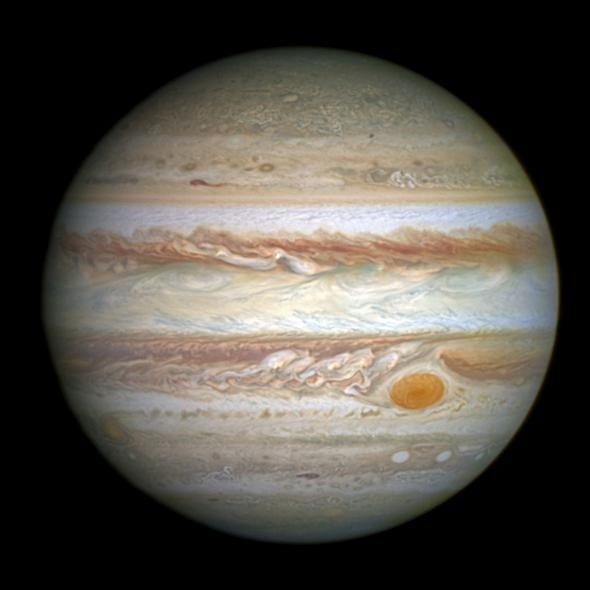Jupiter’s Red Spot Churns Out Air Hotter Than Lava. Sound waves from the famous storm seem to be heating the region above it, and something similar may be happening over Earth’s mountains.

Above Jupiter’s Great Red Spot, where nonstop thunderstorms rumble and roil, it’s hotter than the hottest lava on Earth, reaching temperatures of at least 2400°F (1300°C). It’s “the hottest temperature we’ve seen anywhere on the planet, in the upper atmosphere,” says study author James O’Donoghue of Boston University. How, exactly, the solar system’s largest storm manages to bake the gassy layers above it hasn’t quite been worked out. But it’s likely that sound waves generated by those crashing storms travel upward and heat the atmosphere, scientists suggest today in Nature. The new observations could help solve a long-standing problem in planetary science. For years, measurements of the outer planets’ atmospheric temperatures have been too high to be explained by sunlight alone. At Jupiter, for example, the sun’s warmth should heat the outer atmosphere to roughly 80°F (26°C). But at between 800° and 1340°F (420° and 720°C), this atmospheric region can be significantly warmer than scientists expect based on sunlight alone. And even though scientists know the planet’s spectacular auroras are heating its poles, they can’t account for Jupiter’s overall warmth. “We call this the energy crisis nowadays, because it’s been unresolved since the 1970s at Jupiter, Saturn, Uranus, and Neptune,” O’Donoghue says.
Sound and Fury
Now observations made with the NASA InfraRed Telescope Facility in Hawaii suggest that at least one furnace is churning away and producing a localized—albeit giant—hot spot. It’s centered over Jupiter’s Great Red Spot, where storms at least as wide as Earth have been thundering away for centuries. O’Donoghue and his colleagues looked at a particular form of hydrogen called H3+ that lives high in Jupiter’s atmosphere. Based on the relative intensity of infrared light emitted by that ion, they could work out the temperature of the gas where it lives. And in the region around 500 miles (804 kilometers) above the Great Red Spot, it’s definitely toasty. The team suspects that acoustic—or sound—waves produced by the spot’s thunderstorms could be heating the upper atmosphere as they shake and vibrate Jupiter’s gases. However, it’s unlikely the Great Red Spot is warming the entire planet, meaning that the mystery of Jupiter’s overall temperature persists. But the discovery hints that smaller thunderstorms and other atmospheric turbulence scattered throughout Jupiter could be contributing to its overall temperature, O’Donoghue suggests.

